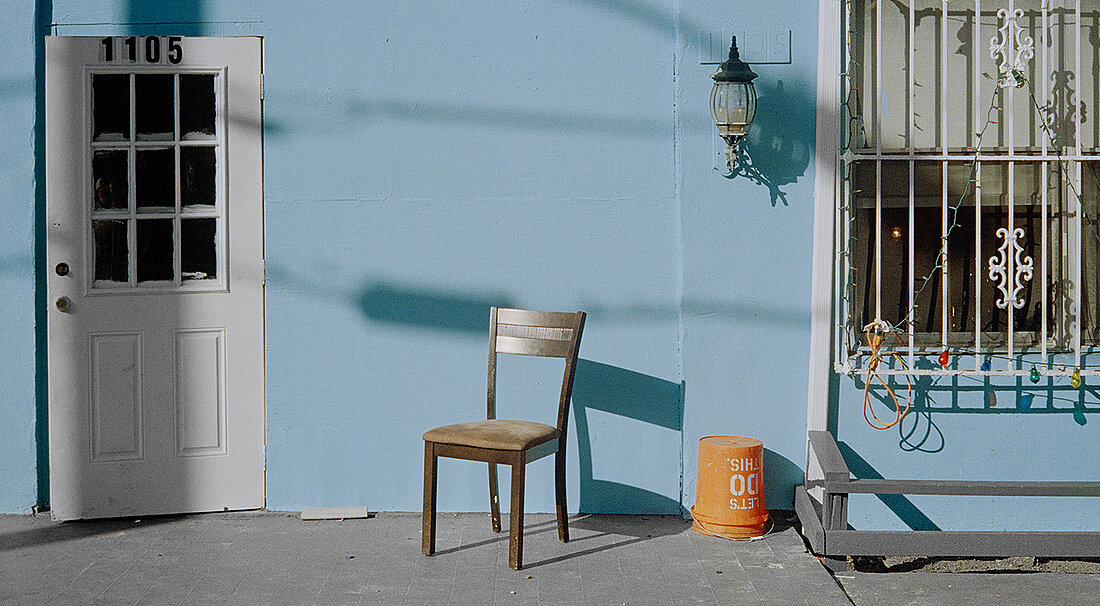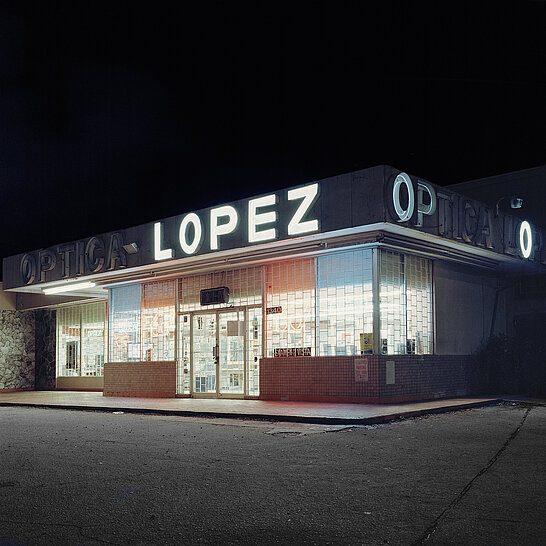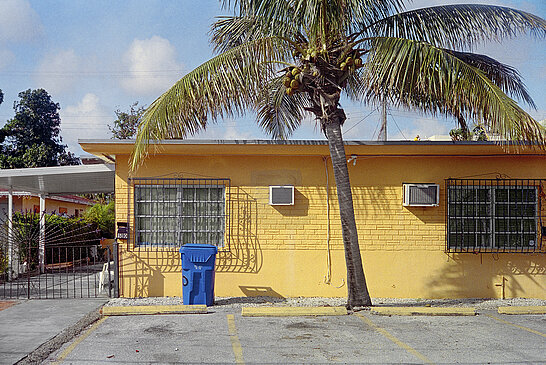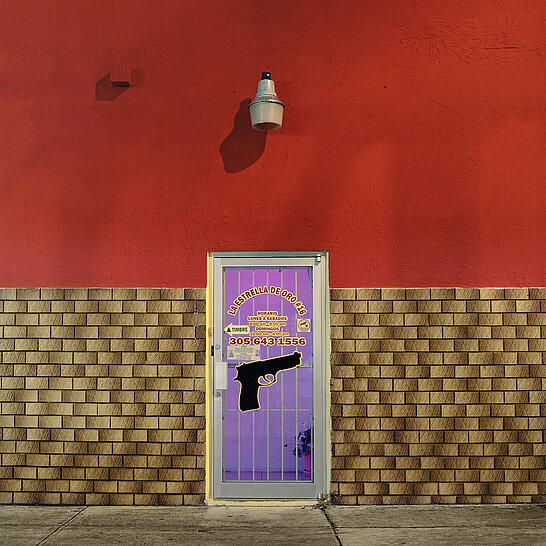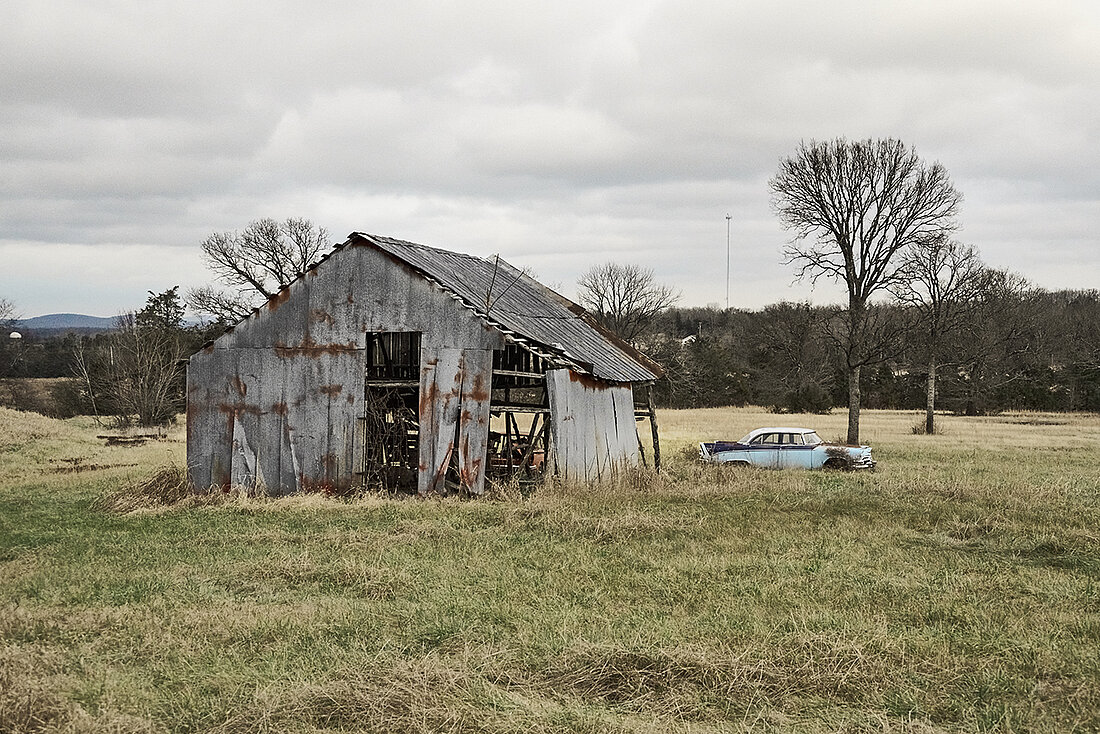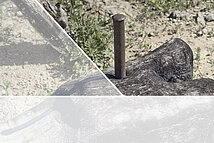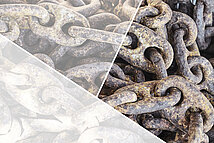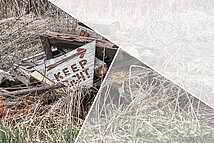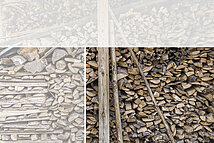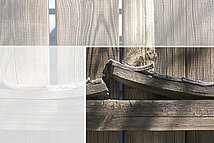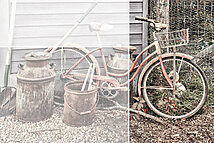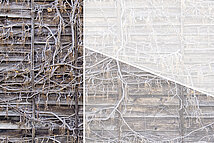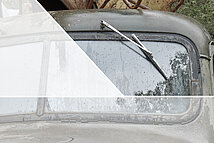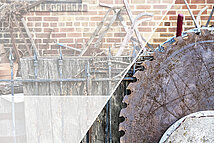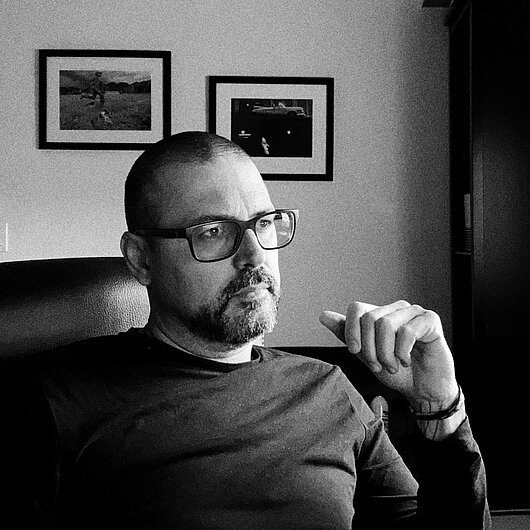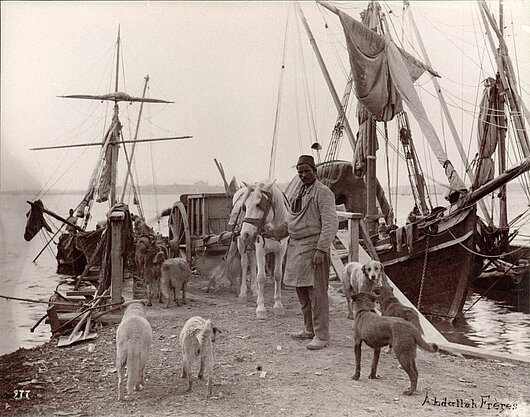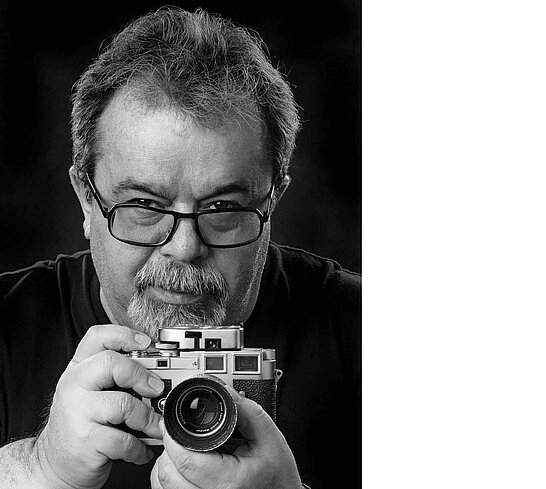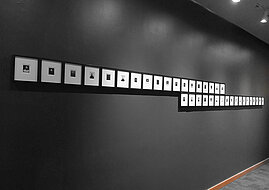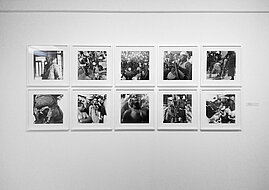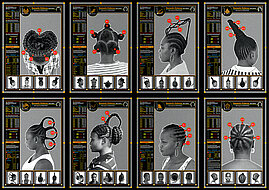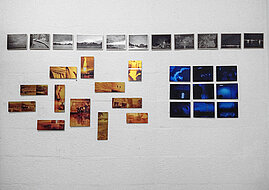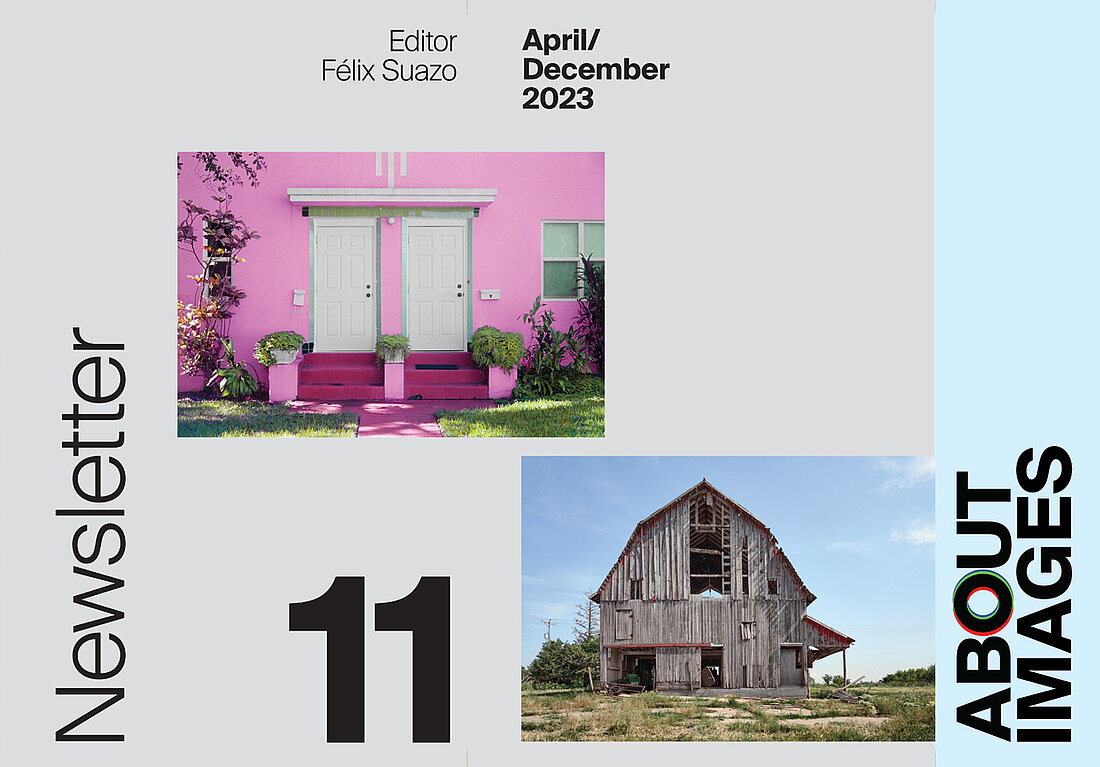
Alberto Sisso
Untitled #21, Wisconsin, 2019
From the series Moving Through Time
“All my life I have said that images are always illusory, that photography is an interpretation of reality and not a reflection of it. Now with the appearance of AI it is clear (...) The visual regime change is so important as when photography appeared. Back then, images that were not made by hand were never seen. Imprisoning a gesture in a daguerreotype was something that could not be understood but it was fascinating. Now the same thing happens, we still do not understand what Artificial Intelligence does but we appreciate it because the result is bewildering and wonderful. We’re just taking the first steps and haven’t mastered the medium yet.”
Joan Fontcuberta
Quoted in: Marta Cervera. ”Revolución en la imagen. La Inteligencia Artificial noquea al mundo de la fotografía.” [Revolution in the image. Artificial Intelligence knocks out the world of photography.”] El Periódico de España, Barcelona, Saturday, April 15, 2023
www.epe.es/es/sociedad/20230415/inteligencia-artificial-noquea-mundo-fotografia-86056987
Editorial
By: Félix Suazo
The question about the artistic status of photography has become more and more complicated since the appearance of artificial intelligence programs. As if the impact of digital culture on the process of capturing and reproducing the photographic image were not enough, now we have to deal with the fact that it is no longer even necessary to have a camera to take pictures, nor are they required to reproduce what the photographers have in front of them. It is enough to tell an almost ineffable device to construct a more or less plausible image of a reality we have not seen.
The truth is that the debate on this subject is mixed with different issues that require discernment.
For example, one thing is what machines can do, and another is what artists do or wish to do with them. A machine can generate remarkable results, but not necessarily artistic ones. Intentionality is the decisive factor in determining whether those results have aesthetic value.
Second, taking a photograph is different than producing an image. Artificial intelligence does not take photographs, but constructs images from pre-existing digital information, generating a kind of algorithmic collage.
Consequently, we must distinguish between an artistic image and other images. An artistic one is based on aesthetic criteria and purposes, regardless of the medium used for creating it.
From straight photography to artificial intelligence, the only decisive change has been the disappearance of the object and, consequently, the dissolution of reality as we knew it. Photography is no longer a proof of veracity extracted from the real but the testimony of a world where there are no longer “things” but flows of data and information. Indeed, it is not photography that is threatened by technology but our perception of reality; what is in crisis is the belief that photographs refer to a disappearing reality.
Artificial intelligence is confronting us with the fragility of the real. Most likely, photography can take up that challenge as a field of exploration. This situation requires technical and intellectual preparation but also a terrific aesthetic sensibility.
RAINY SILVESTRE
Interview with Rainy Silvestre
By Félix Suazo
We interviewed Miami-based Cuban-American artist Rainy Silvestre (Matanzas, 1975) about his photographic exhibition Little Havana at Artmedia Gallery (Miami, 2023). Silvestre tells us about his experience with analog and digital photography, stressing that the important thing for him is that the medium used is in tune with what the photographer wants to express. He also offers his point of view on the relationship between photography and the archive and its effects on digitizing and printing images. But beyond the technical demands, his work’s primary motivation is to record how humans interact with the environment. He says, “all my work is an exploration of our humanity, our imperishable imprint on everything around us.”
Félix Suazo
You have transitioned from analog to digital photography. What has that experience been like for you?
Rainy Silvestre
Hi Felix, thank you for inviting me to answer these questions. As you well point out, I started my journey as an analog photographer, then when film began to get scarce and digital cameras came about, I switched for a few years, only to come back rushing to film once it became available again and affordable. In reality, it doesn’t matter which medium we use to express ourselves and create or take photographs; what’s important is that it means something to you and that it fulfills you.
FS
How do you conceive the relationship between the document, the archive, and memory in your photographic work?
RS
I think they are directly related to one another. Having produced on film
the vast majority, it has to do a lot with the physical negative as an object, its archival properties, in direct correlation to the print and its palpability.
Our memory is directly attached to our senses, and our ability to touch is
one of them.
FS
According to your point of view, what aspects vary when going from the photographic negative to its digitization and printing? Could we affirm that the archive is built from the scanner in your case? Why?
RS
The main difference is not having an analog printing process (Cibachrome, RA-4, etc). Therefore, scanning became the bridge between the two forms. Since the introduction of modern printing methods and papers, printing the old way has become difficult and expensive. Yet, for those who still use them, the negative continues to be the primary source of the image, not the scanner. The scanner it’s just an additional tool.
FS
In several of your works, the image shows events that are not visible, as it happens in the empty rooms of the Temporary Spaces series or the landscapes of the I Believe in America series. What other non-visible parts do you want to highlight in your photographs?
RS
Although not clearly apparent, it’s implicit that our humanity interests me in the series you mention. Frankly, my entire work explores our humanity, our everlasting stamp on everything surrounding us. What we do, what we build, how we interact with our environment.
FS
In your series Little Havana, you focus on one of the most emblematic scenarios of the Cuban community in Miami. What aspects of that reality attracted your attention? Is there any biographical motivation in these works? Why?
RS
The idea of Little Havana series was born out of several unplanned walks through this emblematic neighborhood. Initially, I wandered, but as the work progressed, so did my approach. It’s important to mention that it is not only about Cubans but about all the immigrants and the mark they have made and continue to make in this area. As immigrants, we bring our cultural customs and have transported them to Little Havana, creating an environment of acculturation that is unique and clicks with our own stories.
Memories
1833
Searching for a new print method, French painter Hércules Florence (1804-1879), who lives in the surroundings of São Paulo, in Brazil, invents a light-writing technique of reproduction he appropriately calls photographie.
1858
Three brothers of Ottoman-Armenian descent, Vicen (1820–1902), Hovsep (1830–1908), and Kevork (1839–1918), open their photographic gallery in Constantinople (now known as Istambul) under the business name of Abdullah Frères.
1866-1867
The album Souvenirs du Sénégal, 1866-1867, by French photographer A. Jacquer, gathers forty-seven prints on albumin papers from glass negatives exposed between 1864-1865.
1876
The Ghanaian George Lutterodt (1850/55–ca. 1904) opens a gallery portrait in Accra, present-day Ghana.
1901
In Taichung, Taiwan, during the Japanese era, one of the first generation of Taiwanese photographers, Lin Tsao (1881–1953), inherits a photographic gallery from his teacher Mirimoto and renames it Lin Photo Gallery.
1914
The Clarence H. White School of Photography opens on the eastern side of Greenwich Village, New York, being one of the city’s first specialized schools in this technique.
1930
On September 1st, an exhibition of more than 300 photographs by Harry Moult (1878-1946), a Wellington-based electrical engineer and amateur pictorialist photographer, opens at the New Zealand Academy of Fine Arts gallery in Wellington’s Whitmore Street.
1940
Young twin sisters Debalina Mazumder (1919-2012) and Manobina Roy (1919-2001), who started practicing photography at age twelve, participate this year in at least two photographic exhibitions: one patronized by the Governor of Bengal and held by the Lens Club Calcutta, and the other, the 3rd Benares All-India Salon organized by the Photographic
Society of Bangalore.
1952
The Chinese Camera Club of South Africa is formed by members of Johannesburg’s small Chinese community who have been excluded from local photography circuits based on race.
1956
Organized by Cuban art critic José Gómez Sicre (1916-1991), the Visual Art Department director of the Organization of American States (OAS), is presented at the Pan American Union Gallery, in Washington D.C., the exhibition Nacho López, photographer of Mexico, from August 28th to October 4th.
1980
The Hasselblad Foundation, based in Gothenburg, Sweden, starts to grant annually, except for 1983, the Hasselblad Foundation International Award in Photography, considered today the most prestigious in the photographic world.
1992
In Indonesia, the news agency Antara opens its photojournalism gallery, the first of its kind in the country.
2000
In Hong Kong, Asia Art Archive is co-founded by Claire Hsu and Johnson Chang as an independent non-profit organization intended to document and make accessible the multiple recent histories of art in the region, including photography and video arts.
2008
Dina Mitrani opens her gallery in Miami, focusing exclusively on fine art photography and photo-based art.
2020
Due to the instructions issued by the British Government because of the COVID-19 pandemic, the London Sotheby’s auction 50 Years of African Photography, scheduled for March 24, takes the form of an online sale, running from March 27th to 31st.
ALBERTO SISSO
Running on the road with Alberto Sisso
By José Antonio Navarrete
A person said to me in front of a two-image composition that integrates Alberto Sisso’s series Moving through Time, exhibited at Artmedia Gallery (November 10, 2022 - February 3, 2023): “This work is a reflection on how American agriculture has been ruined.” Another spectator commented: “The barn is like a child’s drawing of a house… Hum! These photographs are like a trip to our childhood.” One other specified: “For me, this work is about death. It’s about the personal movement to our physical end. Everything is shabby in these images.”
As I know, because of my long itinerary as a curator, every spectator relates the more intrinsic meaning of a specific artwork to its life experience, motivations, concerns, and world vision. Even art connoisseurs do so, although they frequently try to avoid it when discussing the place of an artwork inside the territory of the art practices.
Artworks commonly don’t display the potenciallity for all the meanings that some people can read when seeing them because of their runaway and feverish imagination. However, the most stimulating art proposals are richly polysemic, that is, able to disseminate senses in different ways. The series Moving through Time contains referents placed in the encounter between the past, present, and future. This kind of meeting is very productive for localizing connotations that transition from personal to social experiences and vice versa, or feelings to thoughts and back and forth. Besides, this encounter can also be a source of metaphors.
For the artist, these barns “remind us of how fragile life is and that after our physical departure, nature returns, claiming justice or, more simply, its space. Seeing how nature takes over a place as soon as humans are no longer present, it’s a clear reminder of how everything is transitory.”
Of course, as a laborious beholder, you can find other potential feelings and interpretations, but please, be aware don’t get too far from the images.
News
1
Rafael Soldi. A Body in Transit
Patricia & Phillip Frost Art Museum, FIU, Miami
August 20 - December 4, 2022
Photographer Rafael Soldi’s A Body in Transit exhibition at Patricia & Phillip Frost Art Museum examines how queerness and masculinity intersect with immigration, memory, and loss.
Born in Peru and based in Seattle, Washington, Soldi uses various methods to create works, including the nineteenth-century photogravure technique and the contemporary photobooth. This exhibition includes works from three interconnected series: Imagined Futures, Entre Hermanos, and Cargamontón. Each series offers deeply personal ruminations on identity while presenting universal yet complex implications of fragility, struggle, and resilience.
2
You Know Who You Are: Recent Acquisitions of Cuban Art From The Jorge M. Pérez Collection
El Espacio 23, Miami
October 27, 2022
Co-curated by Anelys Alvarez and Patricia Hanna from El Espacio 23
This thematic exhibition highlights works acquired since 2017 by The Jorge M. Perez Collection as part of an ongoing investigation and interest in art from Cuba and the Cuban diaspora.
The exhibition brings together artists from different generations who share collective experiences yet take very personal approaches to their practices.
You Know Who You Are is a statement of confidence and resistance. In the context of Cuban art and culture, knowing yourself, having a voice, and defending your beliefs is an act of defiance. Most artists in this exhibition revisit Cuba’s past and examine its present by questioning history, deconstructing hierarchies, and reflecting on notions of representation, race, gender, diversity, and human rights. Others reclaim a connection with the island by referencing its physicality or its place in collective memory. Among the works on display are photographs by José Angel Toirac, Marta María Pérez, Alejandro González, and Juan Carlos Alom.
3
David Palacios - Sensitive Content
Arts Connection Foundation
IDArtLab, Miami
March 11– May 14, 2023
Curated by Andreína Fuentes Angarita and Félix Suazo
Organized by Arts Connection Foundation, the exhibition David Palacios - Sensitive Content comprises three projects focused on violence against women.
Initially conceived in Africa —specifically in Nigeria and Zimbabwe, where the artist lived for several years— the works are based on reports from international organizations that reveal a high rate of female victims of abuse, rape, kidnapping, and exploitation. Palacios juxtaposes statistical information related to the subject, elements of Art History, and content from everyday life, such as the hairstyles and turbans worn by African women. Nigerian artists Obi Nwaegbe and Tersoo Gundu collaborate as guests in one of the projects.
Born in Havana in 1967 and died in London in 2023, David Palacios combines different aesthetics and languages in his work —from painting to design, from photography to installation and video— to build a hybrid visual poetics where the work of art functions as a support for information and critical plea.
4
Fountainhead Artists Open: Visit to Julia Zurilla’s Studio
Laundromat Art Space, Miami
May 11, 2023
During the Fountainhead Artists Open, Miami-based Venezuelan multimedia artist and photographer Julia Zurilla opened her studio to visitors. Along with her video and textile works, Zurilla showed several photographic series on metal and transparencies.
Presented by Fountainhead Arts, Artists Open is a countywide open studioevent that welcomes the public into more than 300 artists’ studios throughout Miami. The program is designed to remove entry barriers to the arts by inviting the public to engage with artists. It is a unique opportunity to see their creative space and what they surround themselves with for inspiration.
Director
Gady Alroy
Editors
José Antonio Navarrete
Félix Suazo
Designer
Raúl Lira / Gady Alroy
Image Processing
Gady Alroy
Artmedia Studio
Print
Artmedia Digital
About Images,
2023, Miami, FL
Publisher:
artmedia LLC
350 NE 75 St,
Suite 103-2,
Miami, FL
www.artmedia.gallery
info@aboutimages.gallery
Cover
Rainy Silvestre
N° 28, 1340 SW 8th St, Miami, 2017
From the series Little Havana, 2016 - 2022
Backcover
Alberto Sisso
Untitled #1, Iowa, 2021
From the series Moving Through Time



